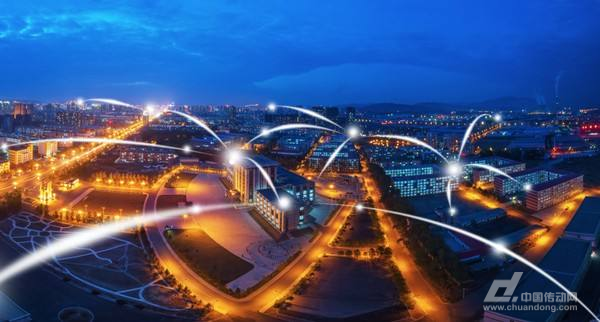People's ideas for future traffic have never stopped.
In the future, perhaps only one push of a button is required, and the driverless public solar car can safely reach the destination; the car's running route is calculated by the city's brain, and it will not cause traffic jams. It also saves the trouble of parking. The idea of transportation never stopped.

A few days ago, the China Highway Society and the Gaode Map jointly initiated the establishment of the "Future Transport and Urban Computing Joint Lab." The first batch of construction projects were launched at the same time, suggesting feasible solutions for urban traffic problems. The first batch of five top scientists and their teams in related fields will carry out innovative research on transportation and urban development issues, jointly promote scientific research on transportation and urban computing in the future, and let people see the dawn of intelligent transportation in the future.
What is the future traffic? According to Weng Mengyong, Chairman of the China Highway Society, “The future traffic must be multi-dimensional. Only by constantly 'upsizing' can we provide better support for solving urban traffic problems.” The establishment of a joint laboratory is conducive to promoting the use of big data and cloud computing to solve the traffic problems.
Industry experts said that in the future, traffic should be digitalized, intelligentized, automated, and fast. The development of flexible transportation facilities is the development direction. Take unmanned driving as an example, Li Meng, executive director of the Joint Research Center for Sustainable Transport at Daimler, Tsinghua University, said that in order to truly achieve safe automatic driving, cars should not be integrated into a complete transportation system because of a single high-tech vehicle. To ensure safe and efficient operation through the sum of various technologies under the condition of mixed traffic flow. Practice shows that the problem of smart driving is not on the vehicle, but on the road, on the infrastructure side.
"The future transportation infrastructure includes traffic detection, signal control, equipment acquisition information, etc., thereby achieving holographic perception at the level of roads and intersections." Li Meng said that from a research perspective, it should include three levels: First, through massive information collection. , Build an artificial intelligence big data model; based on this, carry out risk analysis; then pass the results to the vehicle, provide warnings through AR, VR, and realize smart driving combining roads and vehicles.
In response to concerns about urban congestion, Xu Li, director of the Transportation Research Center of the China Highway Society, told reporters that they have formulated a five-year plan for the research work of the joint laboratories: the long-term goal is to provide a scientific decision-making basis for realizing a strong country with traffic; The goal is to start with solving urban congestion and rely on basic data to provide a “health check” for urban transportation and gradually form an intelligent transportation solution from “individual optimization” to “system optimization”, from the best of small systems to the best of large systems. The plan forms a smart center for urban traffic dispatch.
Take the traffic brain that was successfully implemented in Hangzhou as an example. The project uses traffic big data to quickly and accurately identify abnormal traffic jams in cities and actively push congestion information to traffic police through Internet technology, effectively accelerating the speed of traffic police. The data shows that timely police can shorten the abnormal congestion time caused by the accident by 20% and increase the average speed by 35%.
Dong Zhenning, vice president of Gao De map, said that Gao De will work together with industry and scientific research communities to research and calculate future urban technologies based on massive data, explore future transportation, and change the current status of the transportation industry.
However, achieving smart driving is not the end of future traffic. According to Yang Xiaoguang, deputy leader of the “Changing Engineering” Expert Group of the Urban Transport Department of the Ministry of Construction, a member of the National Intelligent Transportation System Advisory Expert Committee and a professor at Tongji University, the future transportation is not a change in the traditional modes of transportation and transportation, but a thorough model of transportation services. change.
In fact, the transportation system is associated with many developments in human society and directly assists smart cities. Yang Xiaoguang believes that a city's transportation system can be fully deduced in a computer. This not only places high demands on intelligent computing, but also involves strong professional understanding and grasping capabilities. In the past, most of the transportation system decisions were not scientific. Nowadays, with the help of abundant big data, we can realize the real world of holographic sensing. In the future prediction and strategic deduction, we can effectively integrate various resources, actively manage and actively control, Active service.
It is worth pointing out that the current urban transportation system still faces five major difficulties: time-varying, non-line, discontinuous, unmeasurable and uncontrollable. To this end, Professor Yu Zhi from Sun Yat-sen University put forward the IDPS (I is infrastructure, D is data, P is platform, and S is service system) system framework of intelligent transportation system.
He believes that "this framework must have a sound infrastructure, support for complete data collection, construct a smart computing platform, to provide flexible information services."
Experts predict that in the future, smart transportation will realize the networking and coordination of roads: traditional traffic lights will disappear, and instead, the traffic flow will be adjusted through the vehicle's own movement rules to realize intelligent traffic. Behind this is the need for powerful computing, artificial intelligence, and rich big data resources to support it.
LED Swimming Pool Light,LED Underwater Light,Underwater Light
LED inground Light Co., Ltd. , http://www.led-underwaterlight.com
没有评论:
发表评论